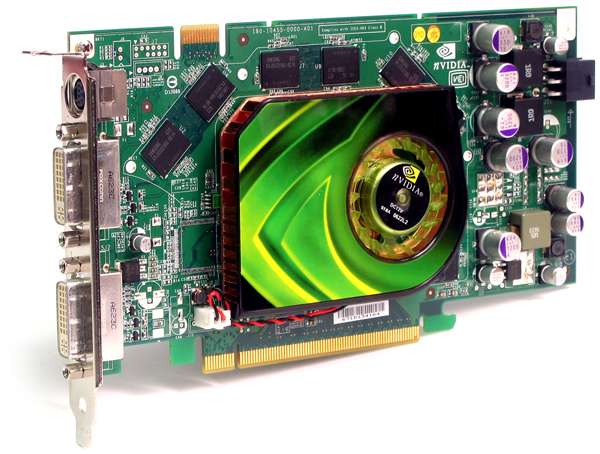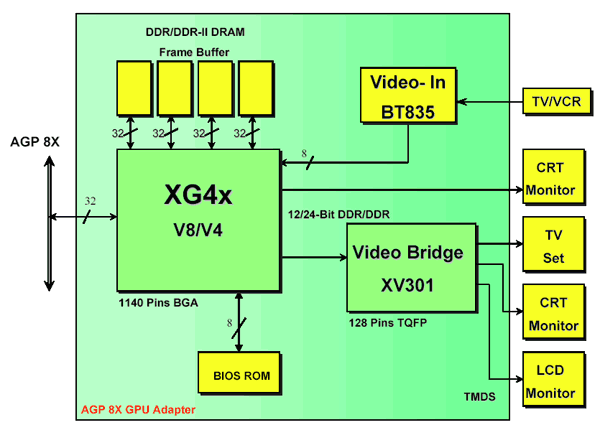A video card, video adapter, graphics accelerator card, display adapter, or graphics card function is to generate output images to a display. 
Many video cards offer added functions, such as accelerated rendering of 3D scenes and 2D graphics, video capture, TV-tuner adapter, MPEG-2/MPEG-4 decoding, FireWire, light pen, TV output, or the ability to connect multiple monitors and advanced games.
Early Video cards were integrated to the motherboard referred as a video controller or graphics controller. Modern motherboards often include a graphics chipset developed by the developer of the northbridge (i.e. an nForce chipset with Nvidia graphics or an Intel chipset with Intel graphics) on the motherboard.

This graphics chip usually has a small quantity of embedded memory and takes some of the system's main RAM, reducing the total RAM available. This is usually called integrated graphics or on-board graphics, and is low-performance and undesirable for those wishing to run 3D applications.
A dedicated Graphics Card has its own RAM and Processor specifically for processing video images, and thus offloads this work from the CPU and system RAM. Almost all of these motherboards allow the disabling of the integrated graphics chip in BIOS, and have an AGP, PCI, or PCI Express slot for adding a higher-performance graphics card in place of the integrated graphics.

 ශිල්ප 64
ශිල්ප 64